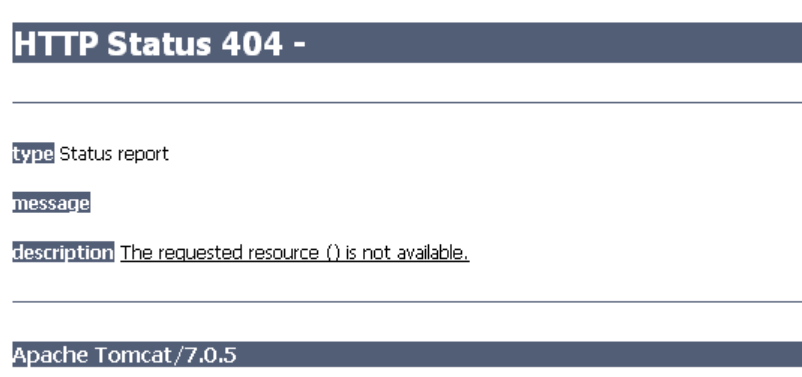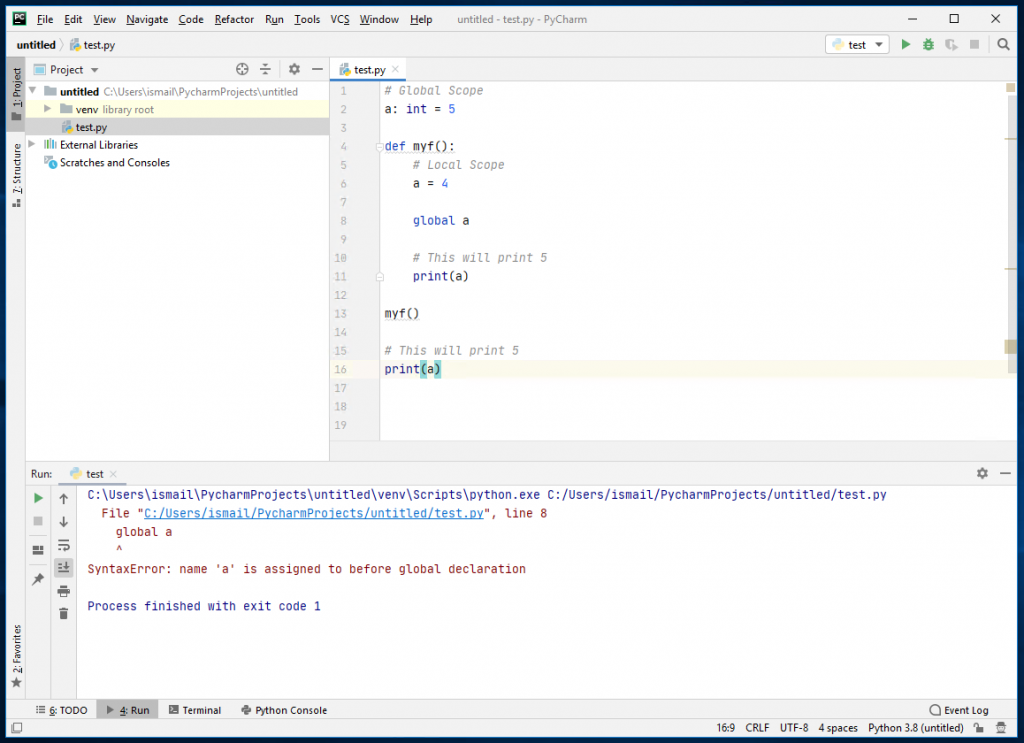Java提供了一个包装类 布尔值 在爪哇。朗包。Boolean类将布尔基元类型的值包装在对象中。布尔类型的对象包含一个类型为布尔的字段。
null
此外,该类还提供了一些有用的方法,例如在处理布尔变量时,将布尔值转换为字符串,将字符串转换为布尔值。
创建布尔对象
布尔类提供 二 用于创建布尔对象的构造函数。
- 下面的语句创建一个包含value参数的布尔对象。
Boolean b = new Boolean(boolean value);
- 下面的语句创建一个布尔对象,如果字符串参数不为null,并且忽略大小写,等于字符串“true”,则包含值true,否则将创建值为false的布尔对象。
Boolean b = new Boolean(String s);
领域:
- 静态布尔值错误: 与基元值对应的布尔对象为false。
- 静态布尔真值: 与基元值true对应的布尔对象。
- 静态类: 表示布尔基元类型的类对象。
方法:
- 静态布尔解析布尔(字符串s) :此方法将字符串参数解析为布尔值。如果字符串参数不为null,并且忽略大小写与字符串“true”相等,则返回的布尔值表示值true,否则返回false。
Syntax : public static boolean parseBoolean(String s) Parameters : s - the String containing the boolean representation to be parsed Returns : the boolean represented by the string argument
// Java program to demonstrate parseBoolean() methodpublicclassTest{publicstaticvoidmain(String[] args){// parsing different Stringsbooleanb1 = Boolean.parseBoolean("True");booleanb2 = Boolean.parseBoolean("TruE");booleanb3 = Boolean.parseBoolean("False");booleanb4 = Boolean.parseBoolean("FALSE");booleanb5 = Boolean.parseBoolean("GeeksForGeeks");System.out.println(b1);System.out.println(b2);System.out.println(b3);System.out.println(b4);System.out.println(b5);}}输出:
true true false false false
- 布尔布尔值() :此方法将此布尔对象的值作为布尔基元返回。
Syntax : public boolean booleanValue() Parameters : NA Returns : the primitive boolean value of this object.
// Java program to demonstrate booleanValue() methodpublicclassTest{publicstaticvoidmain(String[] args){// creating different Boolean objectsBoolean b1 =newBoolean("True");Boolean b2 =newBoolean("False");Boolean b3 =newBoolean("GeeksForGeeks");// getting primitive boolean valuebooleanb4 = b1.booleanValue();booleanb5 = b2.booleanValue();booleanb6 = b3.booleanValue();System.out.println(b4);System.out.println(b5);System.out.println(b6);}}输出:
true false false
- 静态布尔值(布尔b) :此方法返回表示指定布尔值的布尔实例。如果指定的布尔值为true,则返回布尔值。如果为TRUE或false,则此方法返回布尔值。错误的接下来将讨论该方法的另一种变体。
Syntax : public static boolean valueOf(boolean b) Parameters : b - a boolean value. Returns : a Boolean object representing b.
// Java program to demonstrate valueOf() methodpublicclassTest{publicstaticvoidmain(String[] args){// creating boolean variablebooleanb1 =true;booleanb2 =false;// getting Boolean objects from boolean variablesBoolean b3 = Boolean.valueOf(b1);Boolean b4 = Boolean.valueOf(b2);System.out.println(b3);System.out.println(b4);}}输出:
true false
- 静态布尔值(字符串s) :此方法返回一个布尔值,其值由指定的字符串“s”表示。如果字符串参数不为null,并且忽略大小写,与字符串“true”相等,则返回的布尔值表示真值。
Syntax : public static boolean valueOf(String s) Parameters : s - a string Returns : a Boolean value represented by the string
// Java program to demonstrate valueOf() methodpublicclassTest{publicstaticvoidmain(String[] args){// creating boolean variable using different StringsBoolean b1 = Boolean.valueOf("true");Boolean b2 = Boolean.valueOf("TRue");Boolean b3 = Boolean.valueOf("False");Boolean b4 = Boolean.valueOf("GeeksForGeeks");Boolean b5 = Boolean.valueOf(null);System.out.println(b1);System.out.println(b2);System.out.println(b3);System.out.println(b4);System.out.println(b5);}}输出:
true true false false false
- 静态字符串到字符串(布尔b) :此方法返回表示指定布尔值的字符串对象。如果指定的布尔值为true,则返回字符串“true”,否则返回字符串“false”。接下来将讨论该方法的另一种变体。
Syntax : public static String toString(boolean b) Parameters : b - the boolean to be converted Returns : the string representation of the specified boolean
// Java program to demonstrate toString() methodpublicclassTest{publicstaticvoidmain(String[] args){// creating boolean variablebooleanb1 =true;booleanb2 =false;// getting String value of the primitives booleanString str1 = Boolean.toString(b1);String str2 = Boolean.toString(b2);System.out.println(str1);System.out.println(str2);}}输出:
true false
- String to字符串() :此方法返回表示此布尔值的字符串对象。如果此对象表示值true,则返回一个等于“true”的字符串。否则,返回字符串“false”。
Syntax : public String toString() Parameters : NA Returns : a string representation of this object Overrides : toString in class Object
// Java program to demonstrate toString() methodpublicclassTest{publicstaticvoidmain(String[] args){// creating different Boolean objectsBoolean b1 =newBoolean("True");Boolean b2 =newBoolean("False");Boolean b3 =newBoolean("GeeksForGeeks");Boolean b4 =newBoolean(null);// getting String value of Boolean objectsString str1 = b1.toString();String str2 = b2.toString();String str3 = b3.toString();String str4 = b4.toString();System.out.println(str1);System.out.println(str2);System.out.println(str3);System.out.println(str4);}}输出:
true false false false
- int hashCode() :此方法返回此布尔对象的哈希代码。请注意,true的哈希代码是1231,false的哈希代码是1237。要找到选择此整数作为哈希代码的原因,请参阅 在这里 .
Syntax : public int hashCode() Parameters : NA Returns : the integer 1231 if this object represents true; returns the integer 1237 if this object represents false Overrides : hashCode in class Object
// Java program to demonstrate hashCode() methodpublicclassTest{publicstaticvoidmain(String[] args){// creating different Boolean objectsBoolean b1 =newBoolean("True");Boolean b2 =newBoolean("False");Boolean b3 =newBoolean("TRue");Boolean b4 =newBoolean(null);System.out.println(b1.hashCode());System.out.println(b2.hashCode());System.out.println(b3.hashCode());System.out.println(b4.hashCode());}}输出:
1231 1237 1231 1237
- 布尔等于(对象obj) :如果参数不为null,并且是表示与此对象相同的布尔值的布尔对象,则此方法返回true。
Syntax : public boolean equals(Object obj) Parameters : obj - the object to compare with. Returns : true if the Boolean objects represent the same value; false otherwise Overrides : equals in class Object
// Java program to demonstrate equals() methodpublicclassTest{publicstaticvoidmain(String[] args){// creating different Boolean objectsBoolean b1 =newBoolean("True");Boolean b2 =newBoolean("False");Boolean b3 =newBoolean("TrUe");Boolean b4 =newBoolean(null);// checking equality of Boolean objectsSystem.out.println(b1.equals(b2));System.out.println(b2.equals(b4));System.out.println(b1.equals(b3));System.out.println(b1.equals(b4));}}输出:
false true true false
- int compareTo(布尔b) :此方法将此布尔实例与传递的参数“b”进行“比较”。
Syntax : public int compareTo(Boolean b) Parameters : b - the Boolean instance to be compared Returns : zero if this object represents the same boolean value as the argument; a positive value if this object represents true and the argument represents false; a negative value if this object represents false and the argument represents true. Throws : NullPointerException - if the argument is null
// Java program to demonstrate compareTo() methodpublicclassTest{publicstaticvoidmain(String[] args){// creating different Boolean objectsBoolean b1 =newBoolean("True");Boolean b2 =newBoolean("False");Boolean b3 =newBoolean("TRue");Boolean b4 =newBoolean(null);//comparing b1,b2,b3,b4System.out.println(b1.compareTo(b2));System.out.println(b1.compareTo(b3));System.out.println(b2.compareTo(b1));System.out.println(b1.compareTo(b4));System.out.println(b2.compareTo(b4));// The following statement throws NullPointerExcetion// System.out.println(b1.compareTo(null));}}输出:
1 0 -1 1 0
- 整数比较(布尔x,布尔y) :此方法用于“比较”基本体布尔变量。
Syntax : public static int compare(boolean x, boolean y) Parameters : x - the first boolean to compare y - the second boolean to compare Returns : zero if x is same boolean value as y; a positive value x is true and y is false; a negative value if x is false and y is true; Throws : NullPointerException - if the argument is null
// Java program to demonstrate compare() methodpublicclassTest{publicstaticvoidmain(String[] args){// creating boolean variablebooleanb1 =true;booleanb2 =false;booleanb3 =true;booleanb4 =false;//comparing b1,b2,b3,b4System.out.println(Boolean.compare(b1, b2));System.out.println(Boolean.compare(b1, b3));System.out.println(Boolean.compare(b2, b1));System.out.println(Boolean.compare(b2, b4));// The following statement throws NullPointerExcetion// System.out.println(Boolean.compare(b1, null));}}输出:
1 0 -1 0
本文由 高拉夫·米格拉尼 .如果你喜欢GeekSforgek,并想贡献自己的力量,你也可以使用 贡献极客。组织 或者把你的文章寄到contribute@geeksforgeeks.org.看到你的文章出现在Geeksforgeks主页上,并帮助其他极客。
如果您发现任何不正确的地方,或者您想分享有关上述主题的更多信息,请写下评论。
© 版权声明
文章版权归作者所有,未经允许请勿转载。
THE END


![关于”PostgreSQL错误:关系[表]不存在“问题的原因和解决方案-yiteyi-C++库](https://www.yiteyi.com/wp-content/themes/zibll/img/thumbnail.svg)






